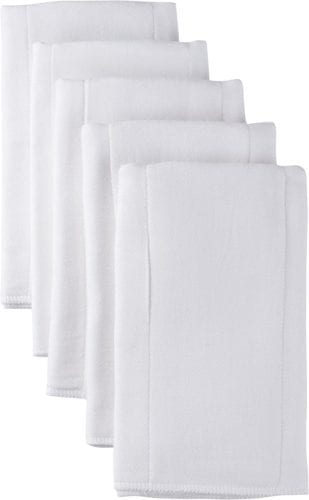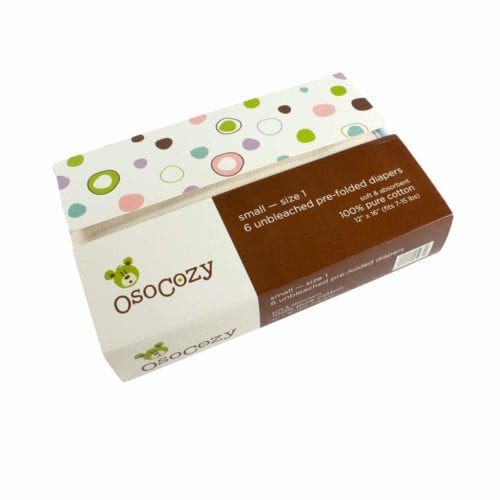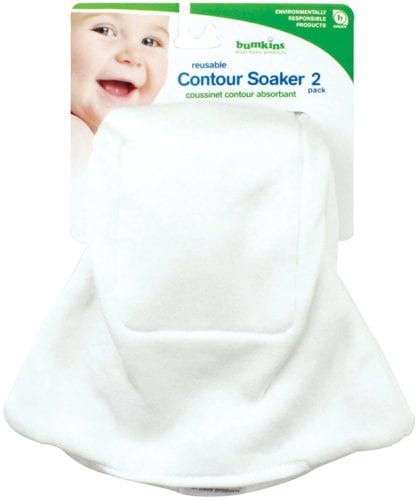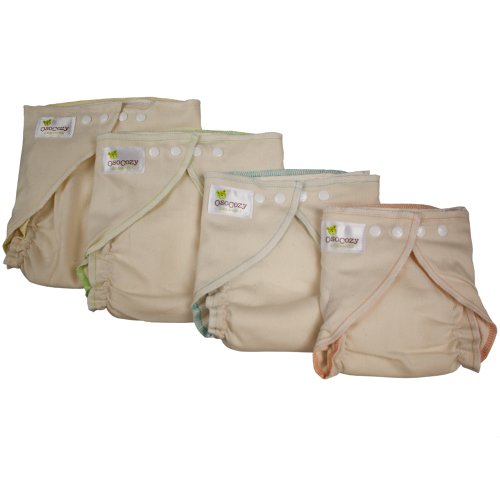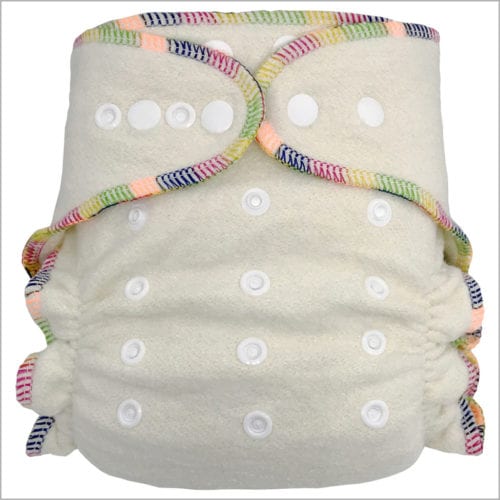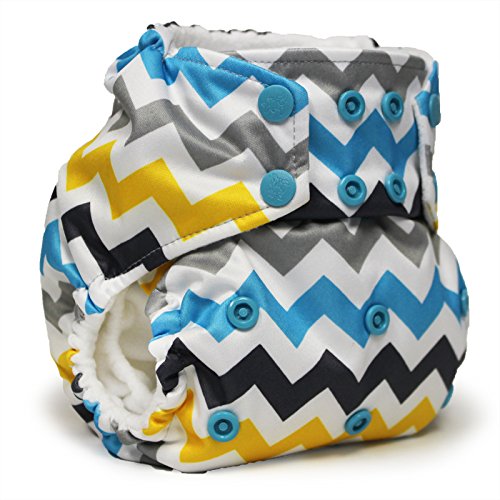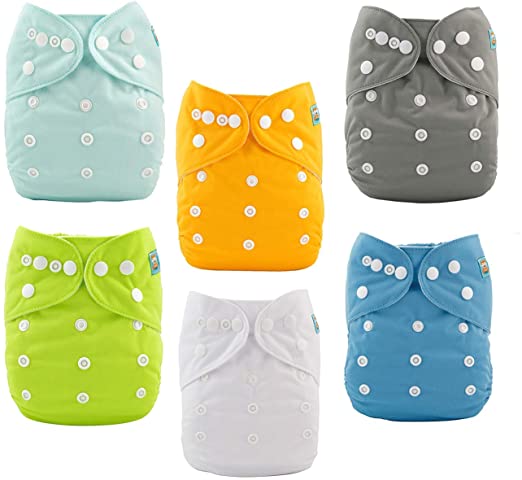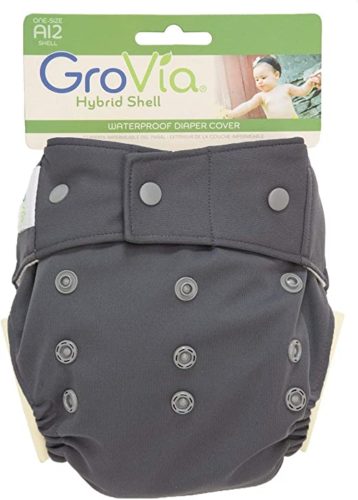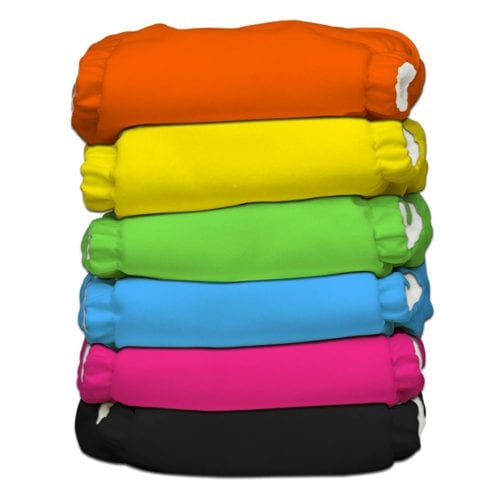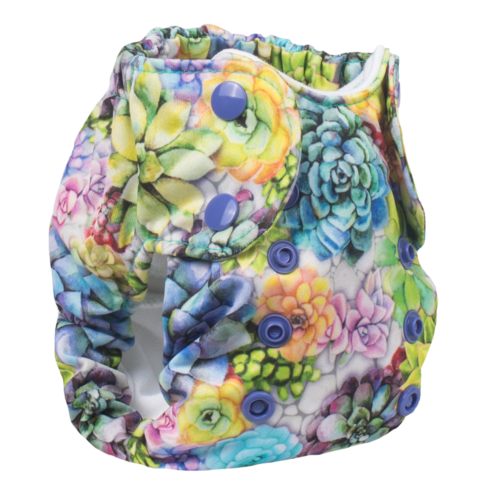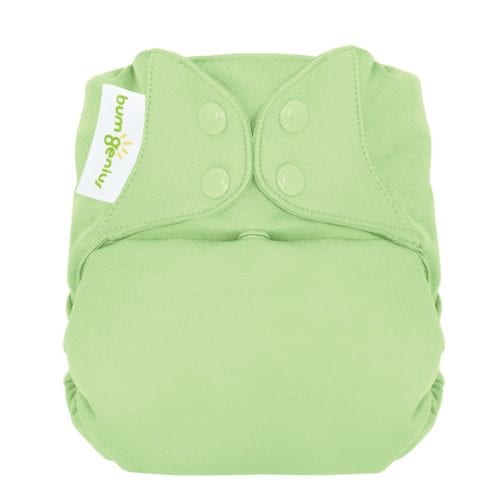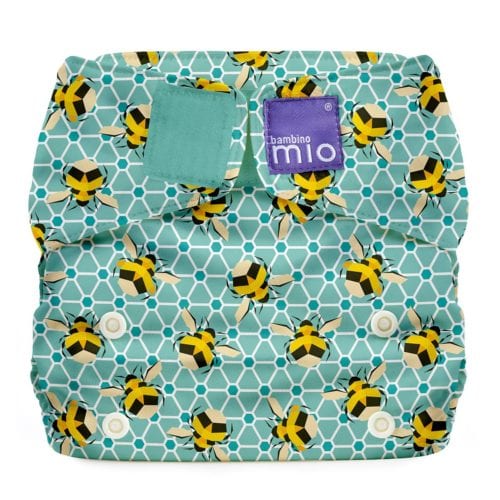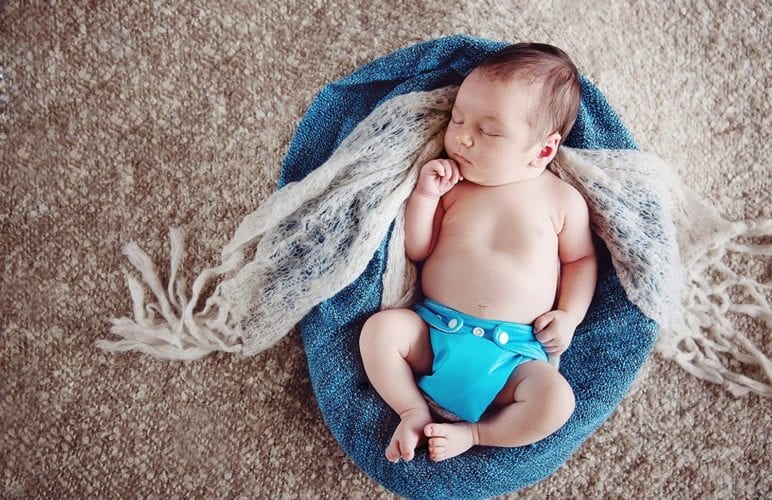
As a parent, diapers are some of the most essential baby items to have. You can choose to use disposable diapers, cloth diapers, or a combination of both. If you’d like to start cloth diapering or switch from disposable ones, this article will give you insight into the types of cloth diapers and the best brands available.
Top 4 Best Cloth Diapers – Comparison
Advantages And Disadvantages Of Cloth Diapers
Advantages
- Cloth diapers are not composed of chemicals such as dyes and gels, which disposable diapers are. Cloth diapers rarely cause skin irritation or adverse health effects.
- Cloth diapering is budget-friendly. They cost less overall compared to disposable diapers.
- They are re-usable. You can use cloth diapers multiple times and on multiple children. Diapers used on your first child can be used again on your subsequent children. You can also resell the cloth diapers when your children grow out of them.
- They can encourage early potty training. Since cloth diapers lack absorbent chemical polymers, your baby feels wet when they have urinated. This awareness helps stimulate them to begin using the potty.
- Using cloth diapers is eco-friendly. Disposable diapers go to landfills, where they take about 500 years to degrade. On the other hand, cloth diapers are not disposed of in landfills since they are washable and re-used.
- Cloth diapers offer several adjustable fittings. They have exact leg and belly tightness to prevent leakages.
Disadvantages
- Cloth diapers require cleaning. The added laundry is time-consuming and adds to your utility bills.
- Some diapers or liners are made of microfiber, designed to wick liquid away from baby’s skin. While this works well for some babies, others can react badly to microfiber and get sore skin.
- These diapers are not as absorbent as disposable diapers. They require frequent changes and pose a risk of leakage. If cloth diapers are not changed often, the moisture could cause diaper rash on your baby’s skin.
- The cloth nappy process is bulky. When you are out and about, you will need to take clean cloth diapers with you, which take up more space than disposable diapers. You also need to bring the dirty ones home for washing.
Our Guide To The Best Cloth Diapers
The best cloth diapers are classifiable into various types. Some are as simple to use as disposables while others take a little to master. Here is our run-down of the different cloth diaper types and the best cloth diaper options in each category.
Flats and pre-fold cloth diapers
These are the cheapest of the cloth diapers and can be the most demanding in terms of skill. Flats are rectangular pieces of cotton cloth divided into three sections, the middle one being more absorbent. Prefold diapers are similar to flats; the difference is that they are pre-sewn while flats are not.
Flats and pre-folds are fastened with safety pins or snappers. You need to buy waterproof diaper covers for both flats and pre-fold diapers to keep your baby’s clothes dry. Covers come in various fabrics such as wool, bamboo cotton, fleece, and polyester.
Although they require folding skills, these diapers are cost-effective, easy to maintain, and alternatively usable as changing pads, burp cloths, or cleaning rags. There are many folding techniques (and YouTube demonstrations!) for different situations, meaning you can find one that works best for you and your baby.
When the pre-fold is soiled, simply replace it with a clean one. Unless they are obviously soiled, you can re-use the covers, pins, and clips, a few times before washing them. Flats and pre-fold cloth diapers are remarkably cheap, easy to wash, and quick to dry. Below are some of the flats and prefold cloth diapers available.
Gerber Birdseye Flat-Fold Cloth Diapers
These are classic, affordable, and 100% cotton cloth diapers. They are featherweight and dry quickly. You can turn them into burp cloths and cleaning wipes after potty training your baby. Whilst you will require waterproof covers and fasteners to keep them in place, they do come in a pack of ten.
Osocozy Pre-fold Cloth Diapers
Osocozy Pre-folds are made of 100% unbleached Indian cotton. On the sides are four layers of absorbent fabric, while the middle part has eight to prevent leaks and spills and keep your baby comfortable. They are available in two sizes. The first size fits newborns up to 15 lbs. The second fits babies 15-30 lbs.
You require a waterproof cover and fasteners to secure them. Available in a pack of six, Osocozy pre-folds are budget-friendly, soft and among the best pre-fold cloth diapers on the market. Wash these pre-folds at least three times before diapering to clear off natural oils and ensure optimal absorbency.
Contour cloth diapers
Contoured cloth diapers bridge the gap between pre-folds and fitted diapers. They have an hourglass shape to fit snugly around your baby’s legs to prevent leakage. The fit and super absorbent fabric make them a good option for overnight.
These diapers require a waterproof shell and a diaper clip or pin to fasten them. They need lesser skills as compared to the flats but are also cheaper than fitted cloth diapers. They are less bulky than pre-folds and thus dry faster. One of the best contour cloth diapers is Bumkins.
Bumkins Reusable Cloth Contour Soaker
These one-size soakers are adjustable and fit many kinds of cloth diaper covers. They are created with a blend of cotton and bamboo rayon. These materials provide optimum absorbency and make the diaper soft and comfy to your baby. They have a pocket for storing inserts to add absorbency if required. The one-size soakers fit babies weighing 7-32 pounds.
Fitted cloth diapers
Fitted cloth diapers have elastic legs and waist, fitted with snaps or Velcro closures. Although made from an absorbent material, fitted diapers lack a waterproof outer cover, so you need to purchase one separately. They come in various sizes, from newborn to toddler.
During changing, you can re-use the cover if clean and only change the fitted cloth diaper. When washed, fitted cloth diapers take longer to dry due to their many layers. Some fitted cloth diaper brands are:
Osocozy Organic Fitted Diaper
Osocozy diapers are 100% unbleached GOTS-certified organic cotton and made in the US. The elastic-banded legs and waist, the snap fasteners, and the hourglass shape make this diaper the perfect fit for your baby. They come in four sizes. Due to their high absorbency, they can take a long time to dry.
EcoAble Hemp Night Fitted Cloth Diaper
These diapers are made of hemp, a super-absorbent fabric, making them a good choice for overnight. The diapers are hypoallergenic, exceptionally comfortable, and naturally anti-bacterial. Hemp becomes more absorbent with frequent washing, and so the diaper becomes even better after the first few uses.
Pocket cloth diapers
Pocket diapers resemble disposable diapers. They are the most modern of the types of cloth diapers. A pocket diaper has a waterproof cover and an inside pocket for prefolds or absorbent inserts to increase absorbency. If your baby needs changing, replace the entire diaper with a clean one and remove the diaper inserts from the inside pocket before laundering. The best pocket cloth diapers are:
Rumparooz Pocket Diaper
Rumparooz diapers are super absorbent and extra soft diapers. It is a one-size-fits-all diaper that fits newborns up to potty training years. Snaps on the outside of the diaper let you adjust the size for a perfect fit at each stage. These diapers taper the moisture away from the skin to keep your baby dry. The diaper comes with two inserts that can be combined in the case of heavy wetters. They also have six different ways in which the inserts can be customized.
The inner and outer linings on the leg ensure that the diaper never leaks, a feature that enables this diaper to emerge among the best cloth diapers available. Rumparooz diapers are made with organic cotton bamboo velour and are available in various colors and prints.
AlvaBaby Cloth Diapers
These diapers are low-cost but functional pocket diapers. One pack contains six diapers and twelve inserts. You can use as many inserts as you need to optimize absorbency. They have many snaps which allow them to fit various sizes, including newborns.
Hybrid cloth diapers
The hybrid diapers have a waterproof cover and a detachable inner absorbent lining. You can buy extra inner liners of various absorbency levels to customize your diaper’s absorbency. If soiled, you can remove the inner absorbent lining and insert a clean one into the cover if there were no leakages.
The waterproof cover is usable with any other inserts as needed. You can also add boosters and nighttime inserts for overnight use. The best hybrid diapers are:
GroVia Hybrid Diaper
This diaper has a biodegradable disposable insert, a feature of convenience to many parents who may be traveling or leaving their children at the daycare. It also has a snap-in cloth insert to boost absorbency. If soiled, remove the disposable insert, discard it and insert a clean one into the cover if it is still clean. The diaper is easy to wash, but its covers are line-dry only. You can only buy the diaper cover and liners separately.
Charlie Banana Cloth Diaper
Charlie Banana is a hybrid diaper that locks down the inserts-cloth or disposable-you use. It has a front-loading pocket to place cloth inserts, and the disposable inserts are kept in place by an end-clip. The fleece lining along the back is soft and comfortable on your baby’s skin.
Many parents love this diaper for its softness, ease of use, ease of cleaning, ability to hold moisture away from the baby’s skin, and the contents intact without leaking. It is a one-size-fits-all diaper. However, the elastic around the legs is tricky to readjust and resize. The best organic cloth diapers for infants and toddlers.
All-in-one cloth diapers
These are very similar to disposable diapers, though more eco-friendly. They have an outer waterproof cover, an absorbent inner layer, and a wicking layer, all stitched together. These are the priciest and most straightforward to use.
If soiled, the entire diaper is replaced with a clean one. These diapers are easy to wash but can take a long time to dry. The ease of use gives caregivers or grandparents looking after your baby an easy time. The best all-in-one diapers are:
Smart Bottoms Born Smart 2.0 Cloth Diaper
Smart bottoms diaper is made from a blend of organic cotton and sustainable hemp. It is exceedingly soft and super absorbent. It is free from chemicals and pesticides, making it an ideal option for your baby’s sensitive skin. As opposed to other organic cloth options, Smart bottoms require only one prewash to optimize absorbency.
BumGenius Freetime All-In-One Cloth Diapers
These one-size diapers are made from a blend of nylon and polyester fabrics. They are resizable with a snap system to fit around the waist of your growing baby. They have adjustable butterfly snaps in the front to fit babies weighing 8-35 pounds.
BumGenius Freetime has two semi-attached inner flaps to boost absorbency. The two flaps can be overlapped on the front to suit heavy wetters.
Bambino Mio Miosolo All-In-One Cloth Diapers
This one-size diaper has Velcro closures around the waist for easy fitting. It has resizing snaps that are easy to adjust and create a custom fit as your baby grows. This diaper is easy to clean, using the pullout tab system, the soiled insert can be removed and tossed in the laundry. The removable insert allows it to be cleaned and dried quickly.
Cloth diaper covers
This is a waterproof shell that wraps around inner absorbent diapers. They are available in various fabrics such as fleece, wool, and Polyester Urethane Laminate (PUL).
You can re-use diaper covers several times before washing, so you only need a few to complete your diaper stash. They often use snap or Velcro closures and offer excellent leak protection.
How To Start Cloth Diapering
You may talk to someone who’s used cloth diapers or research the cloth diapering community. That will help you pick the best cloth diaper for you. It will also help you learn how to fasten them and how to counter challenges after getting started.
You may want to purchase secondhand diapers to start. Secondhand diapers will lower your costs and enable you to test a variety of different types before you settle on the one that works best for you. You may also opt to begin with combination diapering. Combination diapering means using disposable diapers overnight or in public while you use cloth diapering during other times.
How Many Cloth Diapers Do You Need?
Newborns require many diaper changes in a day, you could need about 12-18 diapers daily. For your toddler, you could need 6-8 diapers daily. To manage the washing and drying, enough for two days, 36, or a minimum of 24.
Cleaning tips for cloth diapers
- If your baby is eating solids, wash down the solid waste in the toilet and rinse the dirty cloth diapers in warm water as soon as possible.
- You can then store them in a closed bin or diaper pail until it is time to launder them. Some people prefer to store them in a dry bin, others recommend a detergent solution in the bin.
- It is recommended that cloth diapers need to be washed within two days to avoid smell and ammonia build-up. Follow the guidelines given by the diaper manufacturer.
- It is preferable to wash separately from other items. However, if you have put the diapers through a rinse cycle in the machine, it is alright to add other laundry items to the load before proceeding with a full wash.
- Use sufficient amounts of detergent and repeatedly rinse until all the detergent washes out to avoid skin irritation. Avoid fabric softeners, as these can make the diapers less absorbant.
Final Thought
Cloth diapers are a bit more work but come with various advantages over disposibles. They are better for the environment, budget-friendly, and fully customizable. It is all right to try multiple diapering methods until you find the most convenient for you.
.wp-block-image.product-image { margin-top: 30px; max-width: 350px; margin-left: auto; margin-right: auto; } .product-image figcaption { text-align: center; margin-bottom: 10px !important; } .wp-block-button.amazon-btn { margin-bottom: 50px; }
